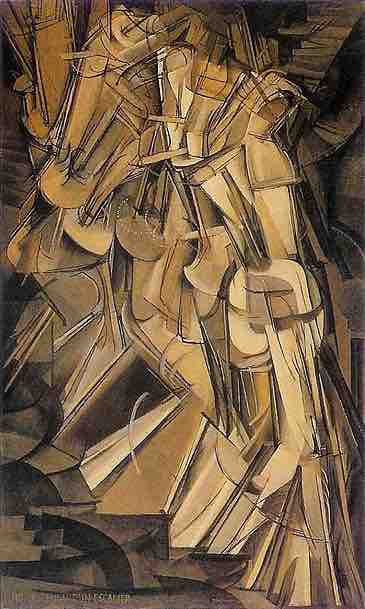Motion, or movement, is considered to be one of the "principles of art"; that is, one of the tools artists use to organize the artistic elements in a work of art. Motion is employed in both static and in time-based mediums and can show a direct action or the intended path for the viewer's eye to follow through a piece.
Techniques such as scale and proportion are used to create the feeling of motion or the passing of time in static visual artwork. For example, on a flat picture plane, an image that is smaller and lighter colored than its surroundings will appear to be in the background. Another technique for implying motion and/or time is the placement of a repeated element in different areas within an artwork.
Visual experiments in time and motion were first produced in the mid-19th century. The photographer Eadweard Muybridge is well known for his sequential shots of humans and animals walking, running, and jumping, which he displayed together to illustrate the motion of his subjects. Marcel Duchamp's Nude Descending a Staircase, No. 2 exemplifies an absolute feeling of motion from the upper left to lower right corner of the piece.

Marcel Duchamp, Nude Descending a Staircase, No. 2, 1912
This work represents Duchamp's conception of motion and time.
While static art forms have the ability to imply or suggest time and motion, the time-based mediums of film, video, kinetic sculpture, and performance art demonstrate time and motion by their very definitions. Film is many static images that are quickly passed through a lens. Video is essentially the same process, but digitally-based and with fewer frames per second. Performance art takes place in real time and makes use of real people and objects, much like theater. Kinetic art is art that moves, or depends on movement, for its effect. All of these mediums use time and motion as a key aspect of their forms of expression.